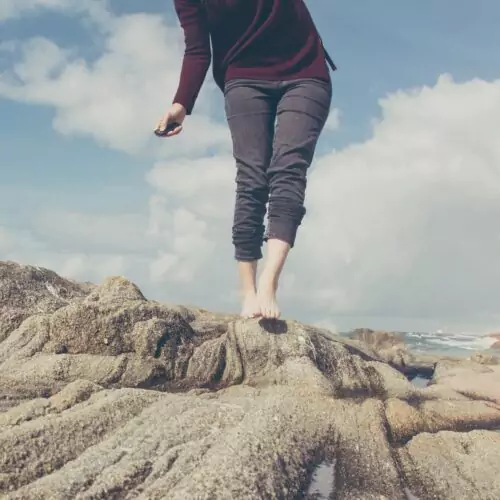Aches, pains, and stiffness can keep you in the house on even the most beautiful summer evenings. The problem is, that sedentary lifestyle is just making your aches and pains worse.
So, how can you ease into activity and exercise without causing more pain?
A walking program is the answer AND I can show you the 5 things you need to know to get started without worsening your pain.
1. Flexibility
Stretching and mobility exercises are of primary importance to reduce injury. Many of us have inadequate flexibility in our muscles and joints. This tightness impacts many painful conditions that effect our lower body (hips, knees, ankles, feet).
By taking time to stretch each day, we can improve our movement and allow the body to be more efficient in both walking and every day activities. In addition, morning or nightly yoga routine (as short as 3-5 minutes) can dramatically improve your muscle flexibility and joint stiffness over time.
2. Strength
Strengthening the muscles in the lower body allows us to decrease the risk of developing overuse injuries when starting a walking program. We need to strengthen all the muscles groups that contribute to the walking movement including the ankle, calf muscles, thighs, and even abdominal muscles.
While you’re at it, don’t forget your feet which are the foundation of your entire body. If your feet are weak, other areas will have to compensate. . . eventually leading to a breakdown somewhere in your lower body joints or even back.
3. Balance
How is it that our relatively small feet are tasked with supporting the rest of our body? By improving our ability to balance on our feet, we not only reduce the chance of injury such as an ankle sprain or even fall. Improved balance and agility also allows the body to function in a more efficient manner.
Something also to remember is that as we get older, our balance naturally deteriorates thus making a fall more likely to occur. This can have devastating consequences to ones activity level and independence.
4. Warm up
Before you start each walking session, it is important to warm up first. It allows a slow increase in muscle temperature, joint lubrication, and blood flow. This will make you more comfortable as you exercise stiff or sore joints and reduce the risk of injury.
A warm up can be as simple as doing a few minutes of standing ankle circles, knee extensions, and hip swings. As you start walking, go slow and increase your speed to a more brisk walk after a few minutes. In the same way, slow down during the last few minutes of your walk to allow your heart rate to gradually return to normal.
5. Footwear
The shoes you wear for walking are very important! They must provide both good support and adequate flexibility to allow your feet to function the way they are designed to. It may be obvious, but avoid walking in sandals, flip flops, or shoes with a heel as they will alter your normal gait pattern.
Additionally, if you experience aches or pains while walking you may benefit from an insert in your walking shoe. A prescription orthotic is most appropriate in this case, as those from the drug store can not provide customized support and will wear out quickly. Remember that the miles add up and you may also need to replace your shoes more often than you realize.
Each year there are over 250,000 reports of walking induced pain or exacerbation of an old injury by starting a walking program. Our goals is for walking to be enjoyable and pain free for you. Additionally, we want it to be an activity you can continue for many years to promote good health and independence.


